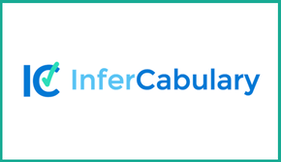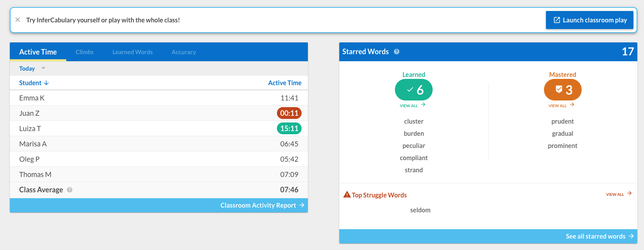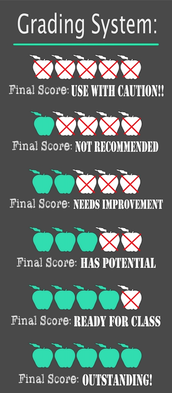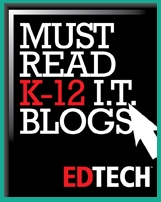
Additionally, to help schools as they deal with the COVID-19 pandemic, InferCabulary is currently providing two months of free access to its online visual vocabulary tool. The offer applies for all new school plans, regardless of the size. To sign up for free access, click here.
In general, InferCabulary is built around a concept known as “Semantic Reasoning”.
The InferCabulary team defines Semantic Reasoning as the process by which new words are learned and retrieved through analysis of multiple images that convey various contexts of the word’s meaning. It’s a higher-level, critical thinking skill that students use in order to learn words deeply. Beth Lawrence, the Co-founder of InferCabulary, discusses this idea in depth during her TEDx talk:
In general, rather than asking students to memorize complex language-definitions that they do not always understand, InferCabulary uses this type of Semantic Reasoning, where students actively infer the meaning of words based on seeing multiple images of the word used in different contexts.
You can see more of what this looks like in action at the 2:30 mark in the first video above.
In total, the InferCabulary curriculum currently includes 4,000 words from across K-12. These words are "tagged" in InferCabulary with literature titles (e.g., If You Give a Mouse a Cookie or Romeo and Juliet) and category labels (e.g., emotions, vehicles, SAT vocabulary lists). InferCabulary emphasizes Tier Two vocabulary (per Beck & McKeown's work) and Academic Words (per Coxhead's work).
Teachers also have access to a dashboard, where they can view helpful analytics and see student progress across their different assignments. A list of “top struggle words” is also provided, which can be beneficial for helping teachers decide what types of remediation students may need.
For support resources, the InferCabulary team provides both web-based and in-person PD and training, depending on a school or district's needs.
Finally, in terms of pricing, InferCabulary is available at the Classroom, School, or District level. For a single classroom (of up to 40 students) the cost is $25 a month. At the School/District level the cost is $7.50 per student, per year.
Overall, I think InferCabulary is an excellent resource for supporting student vocabulary development. We know that just asking students to memorize words and definitions is not a beneficial strategy (nor an engaging one). InferCabulary’s approach helps engage students in critical thinking processes, and connect with vocabulary in ways that make the learning more meaningful.
While I think it can be a beneficial resource for early elementary students, where InferCabulary really shines is at the later elementary and secondary levels. As they note on their site, “InferCabulary teaches students the nuanced meanings of a variety of nouns and adjectives. We have included some tier one words for younger students and those learning English, but emphasize tier two vocabulary words, which are tricky to teach and learn due to their nuances.” I would also add that in peer-reviewed studies on InferCabulary, it has been shown to be a beneficial resource for 5th grade students with disabilities, which is great to see as well.
For more information, you can check out their digital brochure here, or visit their website and use the demo tab at the top to try it out for yourself!
I was not compensated for writing this review.


















 RSS Feed
RSS Feed
